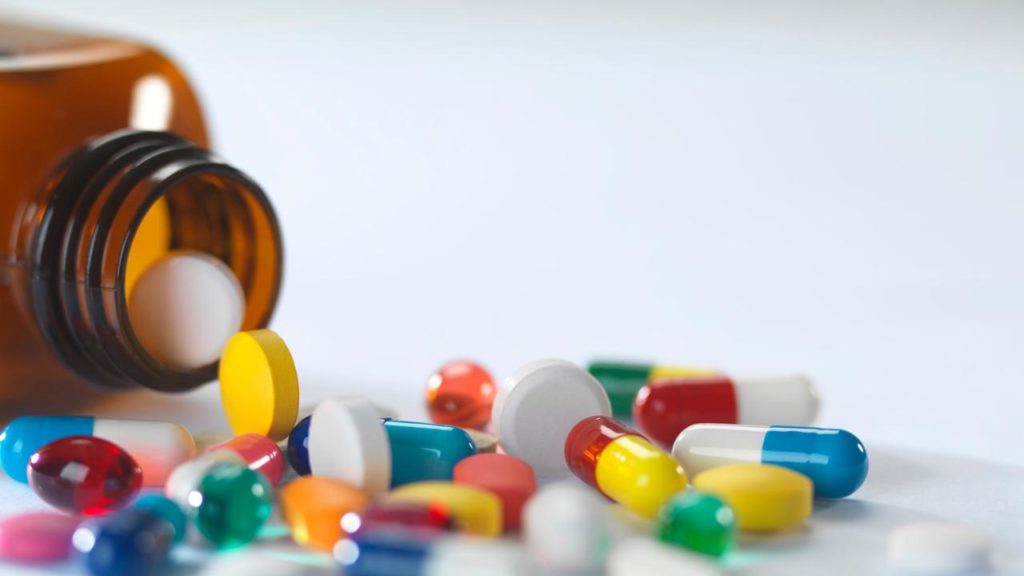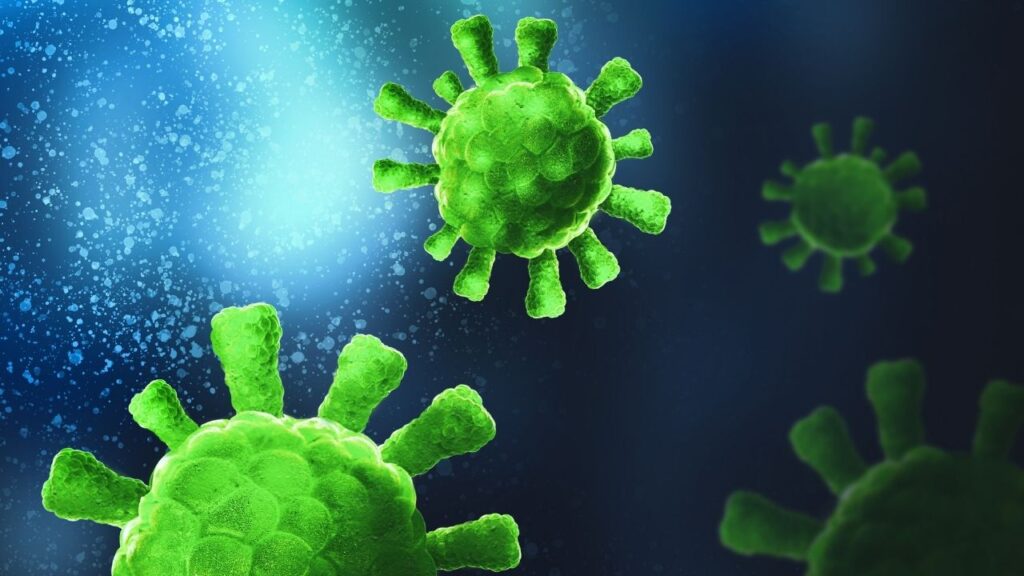There is a growing concern among pet owners about the levels of pharmaceuticals in their drinking water and the wetlands where dogs play. The good news is studies have shown that drinking water in our homes is usually safe, with unsafe levels of known compounds reduced or eliminated prior to use.
Key Takeaways
- The EPA and the USGS tested multiple US water sources and found at least 47 different pharmaceuticals. The most common detected were hydrochlorothiazide, lithium, metoprolol, carbamazepine, estrone, and sulfamethoxazole.
- Pharmaceuticals can and do enter the water supply through human excretion and disposal, manufacturing, and wastewater treatment facilities.
- A 2008 study showed that trace amounts of pharmaceuticals still make their way into the drinking supply despite water treatment and purification processes, and a 2009 study found drug residues in fish near large US cities.
- A USGS study found that the most common pharmaceuticals found in our water supply are due to human usage. Antidepressants, antibiotics, and anti-cancer drugs were commonly found.
- It’s reasonable to be concerned about the long-term consequences of exposure to low concentrations of pharmaceuticals in drinking water, because chronic exposure may contribute to cancer and other illnesses. There is even more concern about the untreated water in open waterways our dogs play in.
There’s Something in the Water
With increases in the use of prescription medications and over-the-counter drugs, there are heightened concerns for our pets’ health and the long-term consequences of exposure to low concentrations of pharmaceuticals in what we think of as “safe” drinking water.
Pharmaceuticals can enter the water supply in many ways, including manufacturing medications, leaking septic systems, hospital waste, landfills, wastewater treatment plants, livestock and feed production facilities, and other agricultural use areas.
Humans excrete pharmaceuticals in urine and feces, and unused medications are frequently disposed of by flushing down the toilet.
Wastewater treatment facilities are often not equipped to detect and remove all pharmaceuticals, which then pass through the treatment process. 1,3
Federal Water Regulations and Studies
Most chemicals are tightly regulated in water sources because they negatively impact human health and our environment. The U.S. Environmental Protection Agency (EPA) is responsible for regulating exposure to potentially harmful chemicals, but drugs and medications have not always been monitored.5
The President’s Cancer Panel (PCP) annual report overviews America’s cancer status. It recently focused on environmental factors contributing to cancer risk. The report showed that pharmaceutical drugs are potent environmental pollutants in waterways.5
Water Treatment Helps Reduce Pharmaceuticals in Water, But May Not Completely Remove Them
In a recent comprehensive study, the EPA and the United States Geologic Survey (USGS) tested multiple US water sources and found at least 47 different pharmaceuticals across the samples.2
- The most found pharmaceuticals in source water were hydrochlorothiazide, lithium, metoprolol, carbamazepine, estrone, and sulfamethoxazole.
- In water that had undergone treatment, twenty-five pharmaceuticals were detected.
This suggests water treatment processes can be effective in reducing concentrations of pharmaceuticals in water, but may not be able to eliminate them completely. 2
Human Pharmaceuticals in Drinking Water
A U.S. Geological Survey (USGS) study found that the most common pharmaceutical compounds detected in water fall into broad categories that reflect human usage.5
Antidepressants, antibiotics, heart and blood pressure drugs, medications for diabetes, antiseizure medications, birth control pills, hormone replacement therapy drugs, and anti-cancer drugs have all been detected in the U.S. water supply.5
This study also tested streams for pharmaceutical drug contamination and found that about 80% were contaminated.5
At Least 46 Million Americans Are Drinking Contaminated Water
A 2008 study found that at least 46 million people in the U.S. have contaminated drinking water. 5
Despite water treatment and “purification” processes, trace amounts of pharmaceuticals still made their way into the drinking supply. 5
The same study showed that greater than 270 million pounds of pharmaceutical waste and byproduct is released yearly into U.S. waterways, which provide drinking water sources for millions of people and their pets.5
Drugs in Wildlife Due to Waterway Contamination
A 2009 MSNBC report evaluated pharmaceutical residues in fish near large U.S. cities. Results showed levels of drugs used for high cholesterol, allergies, high blood pressure, bipolar disorder, and depression in the fish’s tissues.6
Researchers agree that all aquatic animals are at risk for harm by continuous exposure to pharmaceutical-contaminated water.
Though wastewater is treated before entering waterways, many treatment facilities still do not have adequate testing and filtering technology to remove many drugs. The result is likely the accumulation of drug residue in wildlife, pets, and people. 5
Do Pharmaceuticals in the Water Always Cause Cancer?
The concentration of pharmaceuticals in water is generally low enough to be extremely unlikely to directly cause cancer, even with cumulative exposure over time.1
That said, cancer is usually the result of multiple factors coming together, so if a dog is already at an increased risk of developing cancer, exposure to contaminated water could contribute to the disease process.
One of the fundamental concerns for pharmaceutical residues in any water source is the influence on aquatic wildlife like fish and amphibians since they live in the water.3
Similarly, animals that drink from or play in contaminated water may be at risk for exposure.3
When drugs that are usually produced for use in humans are present in rivers and streams, even at low levels, they may have dramatic environmental and physiologic impacts on aquatic wildlife, which may be more vulnerable to contaminants. 3
Chronic Exposure Is a Concern
Acute toxic effects may be of less concern than the consequences of chronic, long-term exposure.4
Cancers, thyroid dysfunction, reproductive failures, and osteoporosis all may be caused or made worse in humans by very long exposure to low levels of drugs in the water supply.5
Since our dogs live and play beside us, they share many of the same exposure risks.
Pharmaceutical contaminants can cause developmental and reproductive disorders, birth defects, bleeding disorders, cancers, organ damage, and hormone dysfunction in aquatic organisms.7
Concern for these compounds should be extended to dogs (and people) that play in waterways and consume fish and amphibians from these areas.
Chemotherapy Drugs in the Water
Anti-cancer medications also cause concern. Powerful tumor-fighting drugs are rapidly evolving, and many wastewater treatment plants do not test for or cannot remove these chemicals from treated water.4
They are frequently considered hazardous contaminants in the environment. Their presence in water may not cause cancer but can cause chronic toxicity and negative effects on genetic activity in exposed aquatic species. 4
Dr. Lauren Trepanier discusses the proven link between carcinogens in our environment and dog cancer in this episode of DOG CANCER ANSWERS.
Risk Factors for Drugs in the Drinking Water
A 2021 report reviewing health risks due to pharmaceuticals in drinking water reported no increased potential human health risk.1 These results can be reassuring for dog lovers concerned about cancer-causing agents in their pets’ drinking water.
Scientific studies have characterized the risk of drinking water contaminated with pharmaceuticals. The most common method compares the concentration of a pharmaceutical detected in water with an established acceptable level for the compound. Concentrations below the acceptable level signify little risk from drinking the water. Conversely, pharmaceutical levels above acceptable limits have the potential for significant risk.1
There are several different terms used in scientific literature to establish similar criteria for acceptable levels of pharmaceutical residue in drinking water:
- ADI: Acceptable Daily Intakes
- HHB: Human Health Benchmarks
- ADE: Acceptable Daily Exposures
- DWEL: Drinking Water Equivalent Levels
Risk factors for dogs are likely similar to those for humans. Dogs are more likely to experience detrimental effects from pharmaceuticals in water if:
- The dog drinks untreated water
- The dog eats fish or other aquatic animals
- The dog has a genetic predisposition to cancer
Risks are higher if the water or fish contain pharmaceutical residues greater than established safe limits. 1
How to Reduce Risk from Drugs in Drinking Water
While pharmaceuticals in the water are believed to be unlikely to cause cancer by themselves, it is reasonable to want to reduce risk as much as possible. There are things you can do:
- Rinse your dog’s coat and skin with clean water after playtime in outside waterways, including fresh and saltwater bodies of water.
- Don’t assume waterways are clean and safe: limit water activities to areas with established water analysis.
- Perform a water quality analysis on your home’s drinking water, including pharmaceutical testing.
- Purchase water with known water quality analysis that includes testing for pharmaceuticals.
- Drug Take Back Events: drop off your unused or outdated pharmaceuticals for proper disposal.
- Buy environmentally friendly, biodegradable products.
- Buy only the amount of medication that is needed – don’t stock up.
Water safety regulations have been under threat or changed in recent years. Clean water affects all of us, and the health of our dogs and other pets.
We recommend you support community education programs that promote responsible proper disposal of unused medications. Also, get involved in local efforts to safeguard waterways and other natural resources. 3
- Do Pharmaceuticals in Drinking Water Pose a Health Risk? American Council on Science and Health. Published January 15, 2021. https://www.acsh.org/news/2021/01/15/do-pharmaceuticals-drinking-water-pose-health-risk-15279
- Furlong ET, Batt AL, Glassmeyer ST, et al. Nationwide reconnaissance of contaminants of emerging concern in source and treated drinking waters of the United States: Pharmaceuticals. Science of The Total Environment. 2017;579:1629-1642. doi:10.1016/j.scitotenv.2016.03.128
- Pharmaceuticals in Water | U.S. Geological Survey. www.usgs.gov. https://www.usgs.gov/special-topics/water-science-school/science/pharmaceuticals-water1.
- Jureczko M, Kalka J. Cytostatic pharmaceuticals as water contaminants. European Journal of Pharmacology. 2020;866:172816. doi:10.1016/j.ejphar.2019.1728161.
- Pharmaceutical Contamination of Water. purewaterfreedom.com. Accessed December 9, 2022. https://purewaterfreedom.com/pharmaceutical-contaminationn 1.
- Pharmaceuticals Found In Fish Across U.S. www.cbsnews.com. Accessed December 9, 2022. https://www.cbsnews.com/news/pharmaceuticals-found-in-fish-across-us-25-03-2009/1.
- Ahuja S. Chapter 11 – Current status of pharmaceutical contamination in water. ScienceDirect. Published January 1, 2021. Accessed December 9, 2022. https://www.sciencedirect.com/science/article/pii/B9780128210574000082
Topics
Did You Find This Helpful? Share It with Your Pack!
Use the buttons to share what you learned on social media, download a PDF, print this out, or email it to your veterinarian.






